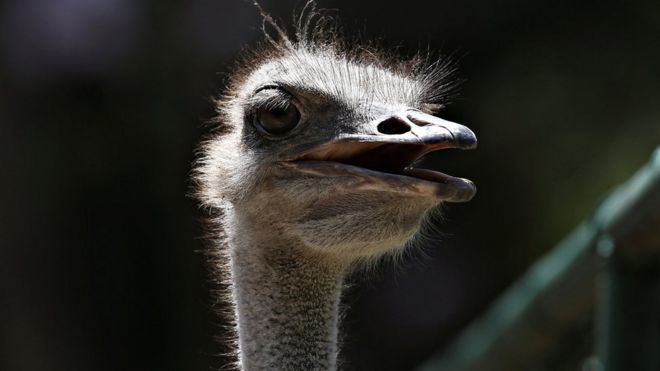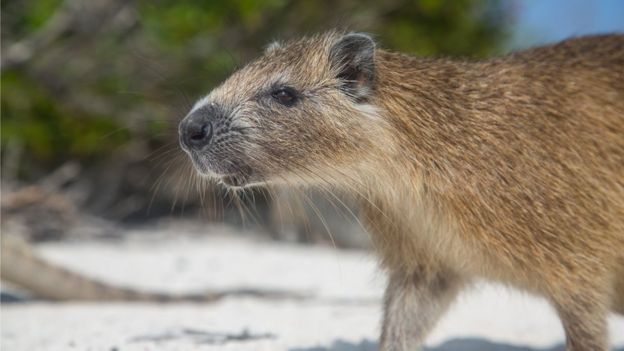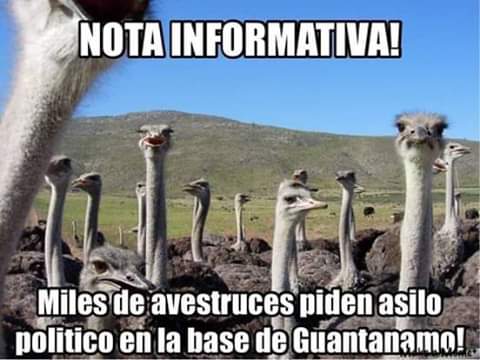Cuba's government mocked by stampede of ostrich memes
 REUTERS
REUTERS
An animal exotic to most Cubans has become an online obsession - but not for the reasons one of the island's revolutionary heroes was hoping.
It all started when Comandante Guillermo García Frías, 91, a former comrade-in-arms of the late leader Fidel Castro, recommended the ostrich as a nutritious supplement to the Cuban diet.
In fact, he said on state television, it could produce "more than a cow", raising more than a few eyebrows across the communist-ruled country and leading to ridicule on social media.
He made the suggestion as director of Cuba's National Flora and Fauna company, which raises ostriches and experiments with other farming ideas in an attempt to resolve one of the Cuban socialist economy's most enduring headaches: shortages of basic food, such as meat, milk and eggs.
The white-haired comandante, who appeared in his olive-green military uniform, also suggested that Cubans consider adding two local species to their menu - the crocodile and the jutía (hutia), an edible rodent also known as the "banana rat".
Memes reflect mirth - and anger
On both sides of the Florida Strait, social media networks - more and more accessible in Cuba as it increases its previously limited connection to the internet - exploded with mirthful memes against Mr García Frías' suggestions.
These were tinged nevertheless with satire and anger, directed against what many Cubans feel is the chronic inability of their rulers to run a viable economy and put food on the table in a fertile tropical island whose soil and climate once made it the world's top sugar producer.
Memes replacing Mr García Frías' visage with that of an ostrich, or including the ostrich, and the crocodile and the jutía, in some of Cuba's best known revolutionary propaganda slogans and images, have flourished across social media.

For example, the well-known government slogan "In every neighbourhood, revolution" - taken from a popular pro-government song - has been converted into "In every neighbourhood, an ostrich".

Last week, Cuban dissident website CubaNet, citing a search carried out on Google Trends, reported that the word "ostrich" was the country's most popular search term during April.

Life in Cuba
- Cubans get access to 3G mobile internet
- New constitution: What's in and what's out
- Miguel Díaz-Canel: The man succeeding the Castros
- Country profile

'Weapon against power'
Another dissident website, 14yMedio, run by anti-government blogger Yoani Sánchez, described the stampede of ostrich memes and parodies as a "political weapon against the [government] power in Cuba".
Ms Sánchez wrote that the increased availability of internet in Cuba, recently extended to mobile phones, exposed the political vulnerability of a single-party government which had in the past largely maintained a monopoly over information.
She ended her article by saying: "To mock power is to start to demolish it."

Such has been the resonance of the social media ostrich fever, that another Cuban dissident website, CiberCuba, reported that "the ostrich [had] become the most popular animal" in Havana's Zoo.
The site, which published video images to back up its story, said its reporter in Havana, Iliana Hernandez, witnessed how visiting "children and adults are not losing any opportunity to have their pictures taken with the bird".
Official media: head in the sand?
But there is one group not joining in the fun. Since Mr García Frías's prime time appearance on state TV's current affairs Mesa Redonda programme earlier this month, official Cuban outlets have maintained a stony silence on his recommendation.
However, as fears rise of another "Special Period" - the severe economic crisis of the 1990s in Cuba which followed the collapse of the Soviet bloc - Cuban leaders have been discussing the problems of food production.
 GETTY IMAGES
GETTY IMAGES
Reporting on a discussion involving Cuban President Miguel Díaz-Canel, government website Cubadebate referred to the current "instability in the market of high-demand products like chicken, flour, [cooking] oil, eggs and pork meat".
Mr Díaz-Canel told the website the causes of this "complex" situation included "the tightening of the economic, commercial and and financial blockade imposed by the United States".

This triggered a barrage of online comments, of which more than 200 were published by Cubadebate.
"For God's sake, how long are we going to go on with this excuse of the blockade?" wrote reader Fito.
Reader olegario said: "in what part of the world which has perennial food needs does the state allow [food] products to rot in the field without selling them: IN CUBA".
Readers suggested paying better salaries and incentives to Cuban farmers, and called for the state to allow more private enterprise and investment by ordinary Cubans.



No comments:
Post a Comment